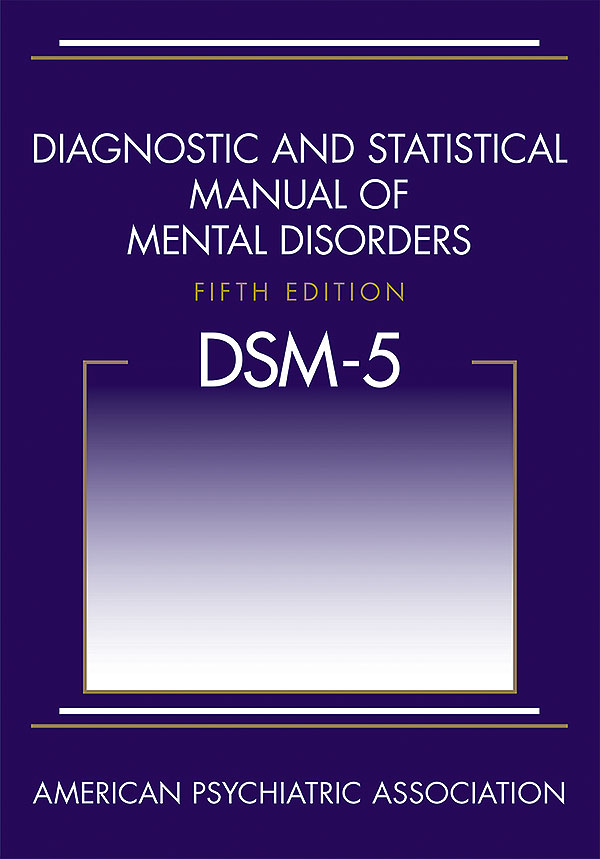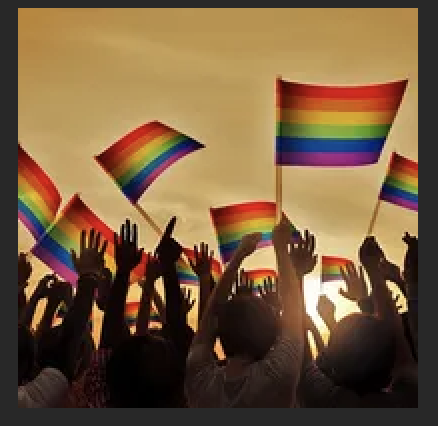Definition

The DSM (Diagnostic and Statistical Manual of Mental Disorders) is a handbook used by mental health professionals and experts, primarily in the United States, as a guide for diagnosing mental disorders. It contains detailed descriptions, symptoms and several criteria for conducting an effective diagnosis. It is published by the American Psychiatric Association and revisions are conducted every couple of years based on new research.
Homosexuality is defined as a sexual attraction or interest to members of one’s sex. As an orientation, homosexuality refers to “an enduring pattern of or disposition to experience sexual, affection, or romantic attractions primarily to” people of the same sex; “it also refers to an individual’s sense of personal and social identity based on those attractions, behaviors expressing them, and membership in a community of others who share them. Homosexuality, bisexuality and heterosexuality together make up the three main categories of sexual orientation as part of the heterosexual-homosexual continuum. The term gay is frequently used as a synonym for homosexual; female homosexuality is often referred to as lesbianism.

History & Background
For decades, homosexual behavior has been variously approved of, tolerated, punished and banned. Homosexuality was not uncommon in ancient Greece and Rome, however, religions that stemmed from the Middle East often homosexual behavior as sinful. Due to its perceived abnormality psychologists classified homosexuality as a form of mental illness based on a variety of theories. Freud characterized it as a result of conflicts of psychosexual development, including identification with the parent of the opposite sex. Homosexuality was officially classified as a mental disorder in the first edition of the DSM, published in 1952. It was initially classified as a ‘sociopathic personality disturbance’. An important aspect to take into account is that the inclusion of homosexuality in the DSM served to move same-sex behavior from being regarded as a sin into the secular world of medicine by recognising it not as a sin but as a disorder. In the second edition of DSM published in 1968, homosexuality was classified as a disorder under ‘personality disorders’. A series of violent uprisings known as the Stonewall Riot commenced – viewed as a catalyst for gay rights. Another event that drove the change of this belief was Dr H Anonymous, who ‘came out’ as a gay psychiatrist advocating for the change in viewing homosexuality as a disorder.
In 1973, there was a change in language from ‘homosexuality’ to ‘sexual orientation disturbance’. Sexual orientation disturbance was defined not just as a same-sex attraction but as a conflict caused by this attraction or a desire to change it. The DSM-III published in 1980 renamed this condition “ego-dystonic homosexuality” and recategorized it not as a personality disorder but as a psychosexual disorder. The DSM-III-R in 1987 categorized marked distress about one’s sexual orientation under “sexual disorder, not otherwise specified”. This deemphasis on homosexuality as a psychiatric disorder would allow for its eventual removal from the DSM-5 entirely in 2013 Sixty years of work by gay rights activists, psychiatrists, psychologists, and leaders in the mental health community have shaped our current views about individuals from sexual minority communities and the care that they receive.
Examples
Impact of Homosexuality being classified as a Mental Disorder: Many gay rights activists protested especially the fact that the need for treatment based on their sexuality perpetuated the social stigma around homosexuality. Classifying homosexuality as a disorder further stigmatized and marginalized LGBTQ+ individuals. They were often treated as mentally ill, leading to social ostracization, discrimination, and sometimes forced or coercive attempts at conversion therapy. Many LGBTQ+ individuals lived in fear of being discovered and were often forced to keep their sexual orientation hidden due to the prevailing societal attitudes and the medical classification. This secrecy had negative psychological and emotional effects.
Post Removal of Classification: The removal of homosexuality from the list of mental disorders helped to destigmatize being gay or lesbian. This change in classification contributed to a shift in public perception, reducing discrimination, and making it easier for LGBTQ+ individuals to come out and live more openly. The declassification of homosexuality as a mental disorder had a positive impact on the mental health and well-being of LGBTQ+ individuals. They were no longer pathologized solely for their sexual orientation, which helped reduce the psychological distress associated with societal rejection and discrimination. While the reclassification primarily affected the United States, it had a ripple effect globally. Other countries and organizations took note and began to reconsider their stances on homosexuality, leading to the pathologization of LGBTQ+ identities in various parts of the world.
Gender Dysphoria: Gender dysphoria occurs when there is a conflict between the sex you were assigned at birth and the gender with which you identify. This can create significant distress and can make you feel uncomfortable in your body. People with gender dysphoria may want to change the way that they express their gender. This is an important perspective to consider as psychiatrists still believe treatment should be administered for those who have conflicts between their gender assigned at birth and the gender one identifies with.
The Controversy and Looking at the Future
The controversy surrounding homosexuality and its classification in the Diagnostic and Statistical Manual of Mental Disorders (DSM) is a critical chapter in the history of LGBTQ+ rights and the evolution of psychiatric practices. Initially, the classification had profound implications for the lives of LGBTQ+ individuals, contributing to their stigmatization and discrimination. Activists and mental health professionals argued that the classification was not only unsupported by empirical evidence but also perpetuated harm by pathologizing a natural variation of human sexuality.
In 1973, the term homosexuality was removed. This change symbolized the APA’s acknowledgement of the social and cultural biases that had influenced earlier classifications and their commitment to depathologizing homosexuality. Nevertheless, the controversy did not end with this significant revision. In the current DSM and ICD-10, both have room to utilize non-heterosexuality for clinical diagnoses. Ongoing debates focused on issues such as the classification of gender dysphoria and the need for more comprehensive and sensitive mental health care for LGBTQ+ individuals. While orthodox psychiatrists demand referendums, and progressive psychiatrists are involved in staging activist attacks at conventions, the journey toward full acceptance and understanding of LGBTQ+ identities within the mental health field remains ongoing.
Works Cited
Baughey-Gill, Sarah. When Gay Was Not Okay with the APA: A Historical Overview of Homosexuality and Its Status as Mental Disorder. 2011, cedar.wwu.edu/cgi/viewcontent.cgi?article=1001&context=orwwu. Accessed 13 Oct. 2023.
Burton, Neel. “When Homosexuality Stopped Being a Mental Disorder | Psychology Today.” Www.psychologytoday.com, 3 July 2023, www.psychologytoday.com/us/blog/hide-and-seek/201509/when-homosexuality-stopped-being-a-mental-disorder. Accessed 13 Oct. 2023.
Drescher, Jack. “Out of DSM: Depathologizing Homosexuality.” Behavioral Sciences, vol. 5, no. 4, Dec. 2015, pp. 565–75, https://doi.org/10.3390/bs5040565. Accessed 13 Oct. 2023.
Eugenios, Jillian. “ ‘I Am a Homosexual. I Am a Psychiatrist’: How Dr. Anonymous Changed History.” NBC News, 2 May 2022, www.nbcnews.com/nbc-out/out-news/-homosexual-psychiatrist-dr-anonymous-changed-history-rcna26836. Accessed 13 Oct. 2023.
Hectors, Arin. “Homosexuality in the DSM: A Critique of Depathologisation and Heteronormativity.” New Zealand Sociology Special Issue: Theorising Mental Health, vol. 2023, no. 38, 2023, pp. 18–28, www.saanz.net/wp-content/uploads/2023/03/03_Hectors_Homosexuality-in-the-DSM_NZS-Special-Issue-2023_final.pdf. Accessed 13 Oct. 2023.
McHenry, Sara E. “‘Gay Is Good’: History of Homosexuality in the DSM and Modern Psychiatry.” American Journal of Psychiatry Residents’ Journal, vol. 18, no. 1, Sept. 2022, pp. 4–5, https://doi.org/10.1176/appi.ajp-rj.2022.180103.
Turner, Allison. “In 1973, APA Removed Homosexuality from List of Mental Illnesses.” Human Rights Campaign, 15 Dec. 2017, www.hrc.org/news/flashbackfriday-today-in-1973-the-apa-removed-homosexuality-from-list-of-me. Accessed 13 Oct. 2023.
Uyeda, Ray Levy. “How LGBTQ+ Activists Got ‘Homosexuality’ out of the DSM.” JSTOR Daily, 26 May 2021, daily.jstor.org/how-lgbtq-activists-got-homosexuality-out-of-the-dsm/. Accessed 13 Oct. 2023.
